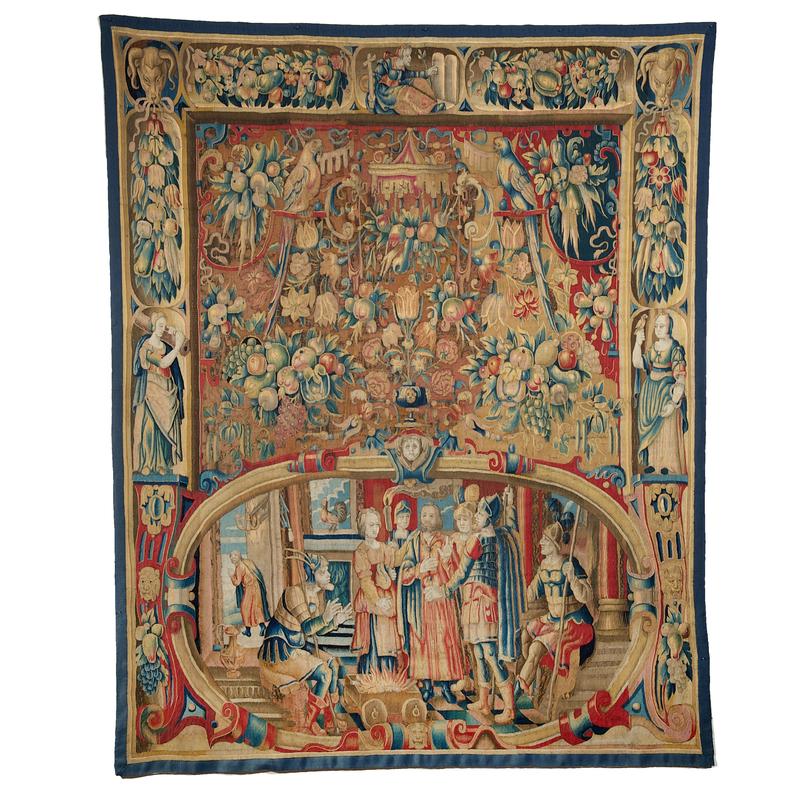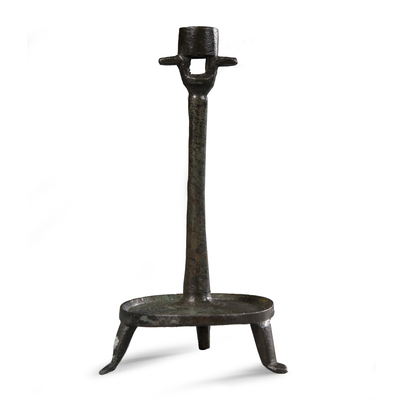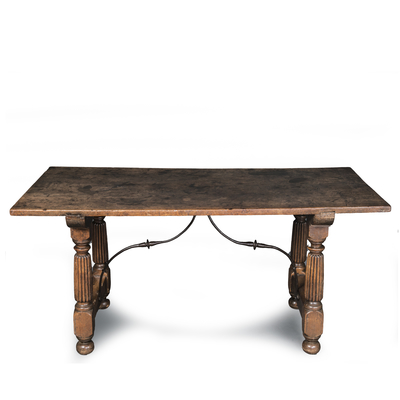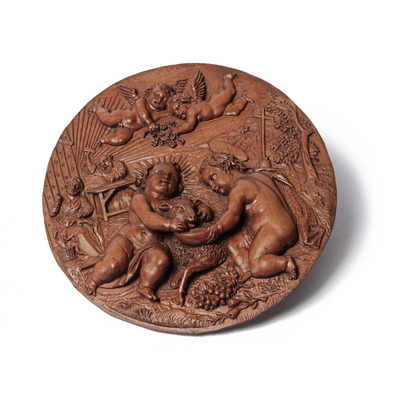Tapestry depicting The Denial of Saint Peter
Global shipping available
- Origin
- Northern Netherlands, probably Delft
- Period
- C. 1580 - 1620
- Material
- Wool, silk
- Literature
V. Woldbye & C.A. Burgers, Geweven boeket, Amsterdam 1972, p. 26, 70, cat. no. 41.
Questions about this object?
Please use one of the contact options below:
Description
This tapestry was made in the Northern Netherlands, probably Delft, around 1580 - 1620. The upper part of the tapestry is decorated with grotteschi, flowers, fruit, a vase and two parrots. The lower half is woven with a large oval cartouche depicting the Biblical story ‘The Denial of Saint Peter’. Saint Petrus is depicted surrounded by a group of soldiers and the female servant of the high priest. On the background is the rooster seated in the window, a reference to the prophecy of Jesus, when he says that Peter will deny him before the rooster has crowed three times. Next to the rooster, Saint Petrus is depicted again, walking away from the crowd while crying. The tapestry has a border composed of small cartouches with flowers and two personifications, on the left Fortitude and on the right Prudence.
This tapestry can be compared to a tapestry in the collection of the Rijksmuseum Amsterdam (inv. no. BK-1967-25), that has a similar division of a symmetrical upper part with grotteschi, flowers and fruit and a lower oval cartouche enclosing a Biblical scene. The Rijksmuseum tapestry is attributed to François Spiering or Aert Spiering.
From the middle of the sixteenth century and especially after the Fall of Antwerp, a large stream of Flemish immigrants, including many craftsmen, came to the Northern Netherlands. Among these immigrants were a number of tapestry weavers who settled in Middelburg, Delft, Gouda and Schoonhoven, where the rich Flemish weaving tradition blended with the prevailing Northern Netherlandish art tradition. Important ateliers belonged to the families Van der Gucht, Spiering, Schaep, Goossens and De Cracht. The weaving of carpets and rugs has both a technical and an artistic side; based on a sketch by the artist, the weaver made the rug. The sketch on cardboard was often inspired by existing prints. Different carpets have the same and recurring motifs, which may point to the same workshop, the same cardboard or the same example.





